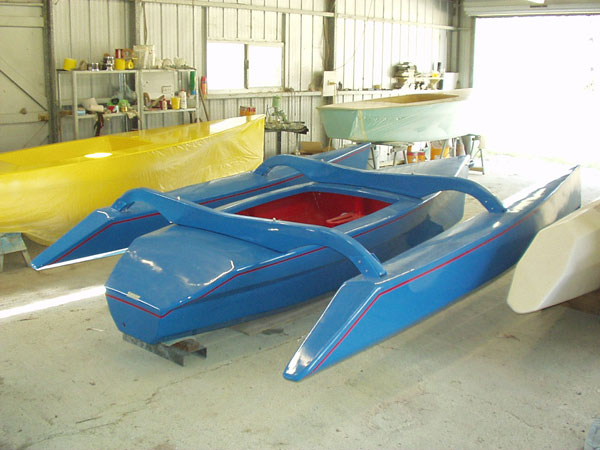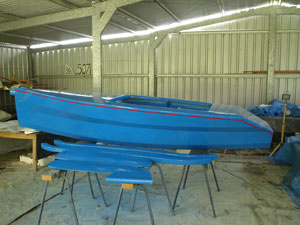Building the Scarab 350 trimaran.
This boat was my favourite boat to build. It was small and quick. Most of the time was spent making the foam sandwich panels see Manufacturing foam sandwich panels but it would be much quicker and less expensive built using plywood. Stitch and glue construction. Boat is built using 4mm plywood for the hulls and 10mm for the centreboard and rudder blade.
The building frame was built using plywood. The building frame longitudinals and bulkheads have slots and fit together egg crate fashion.
The cut panels are attached to the building frame (drywall screws for foam and staples for plywood). If you mark the position of the bulkheads on the inside it will help position the permanent
bulkheads.
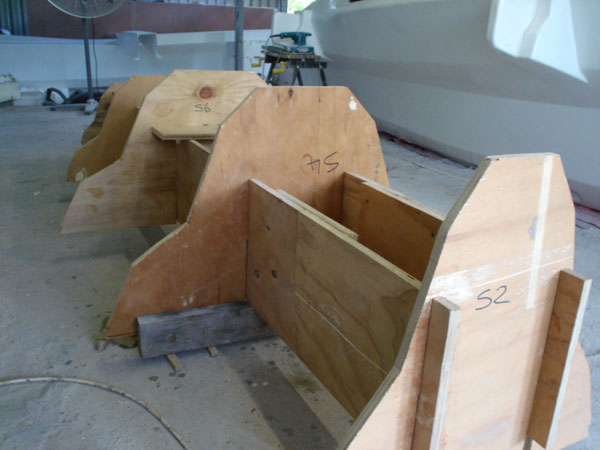
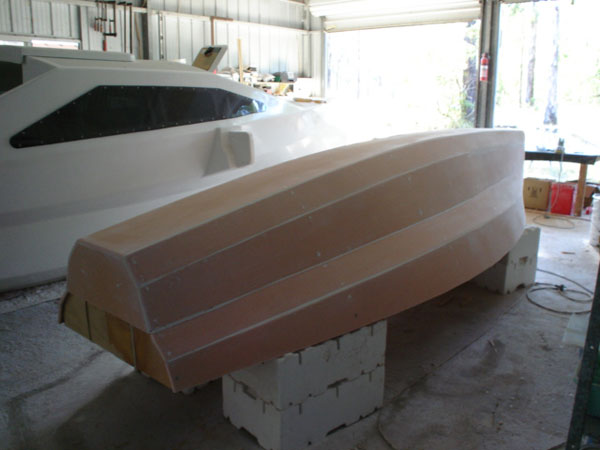
All the panels were added. It is important to ensure the chines are fair at this time. The chines were filled and sanded and then taped. If you use strips of peel ply the weave will be filled
with resin making it easier to finish with minimum sanding.
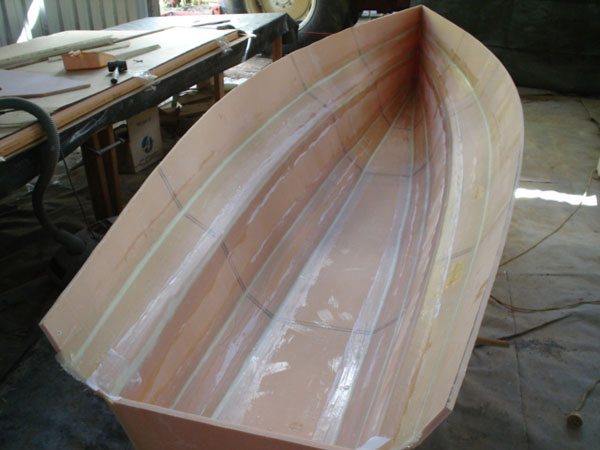
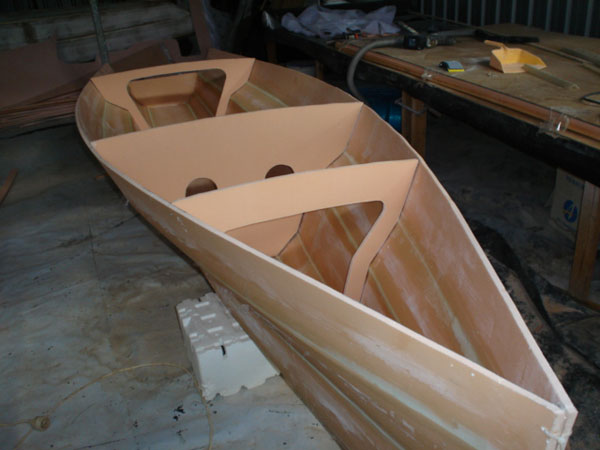
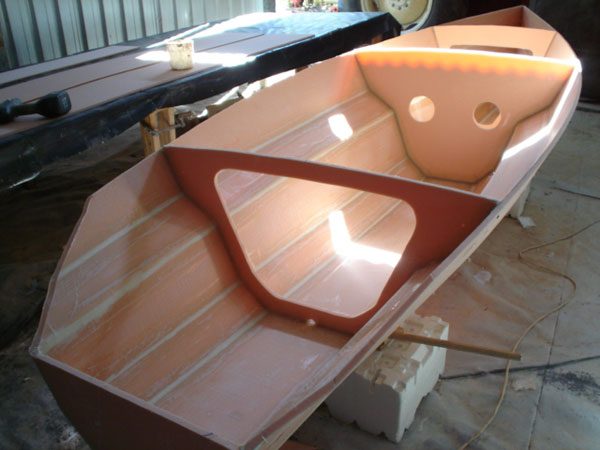

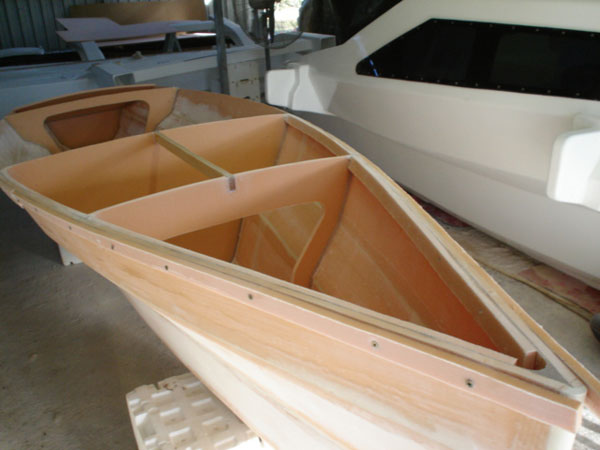
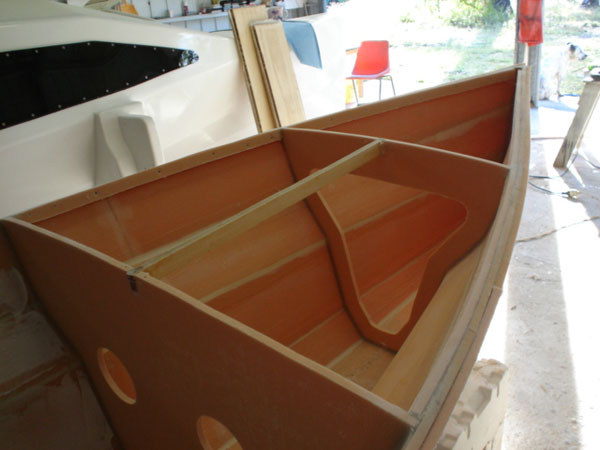
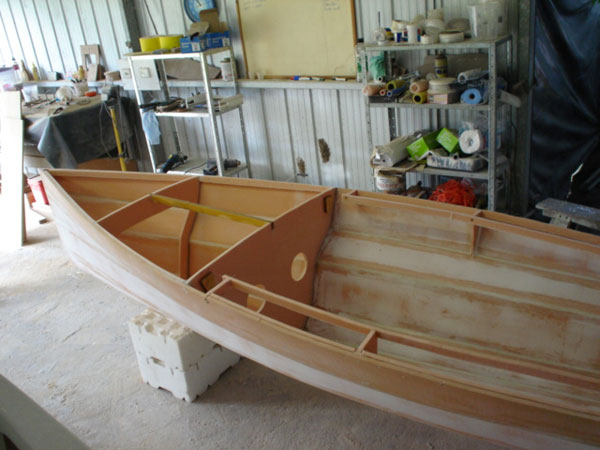
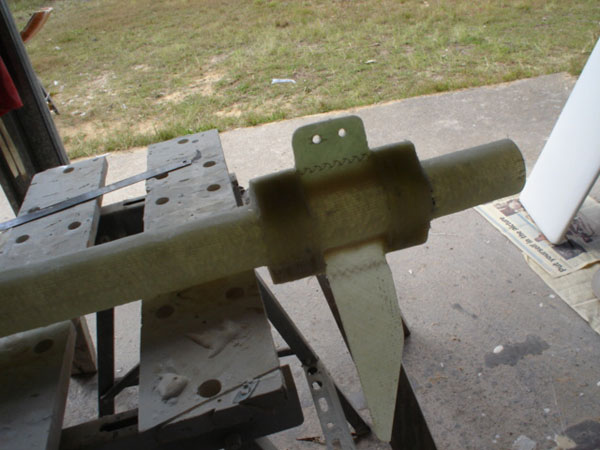
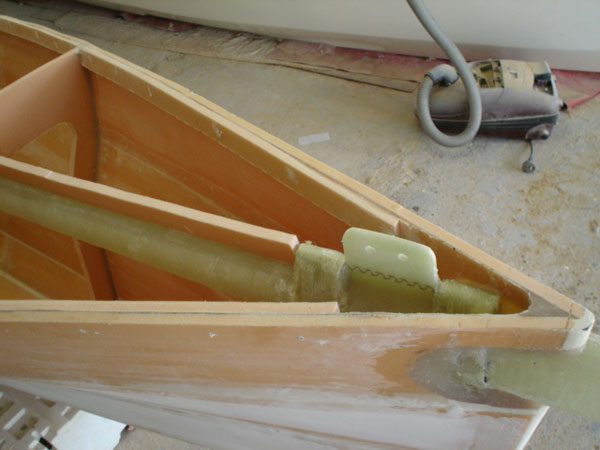
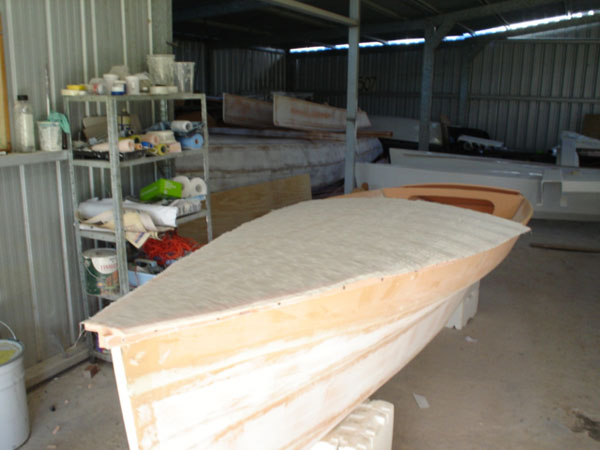
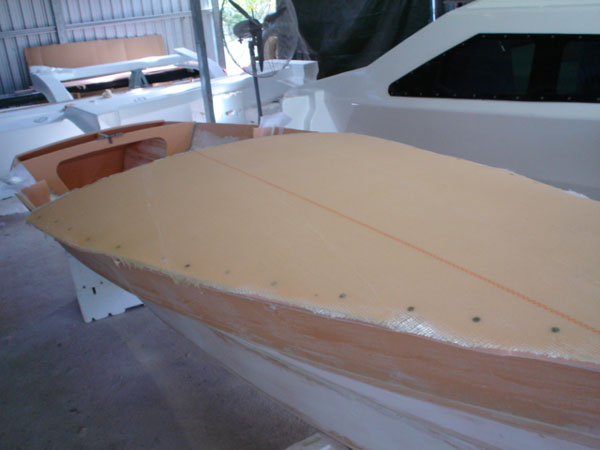
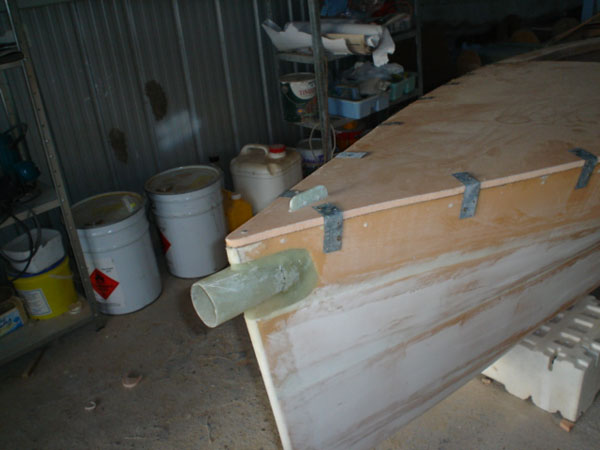
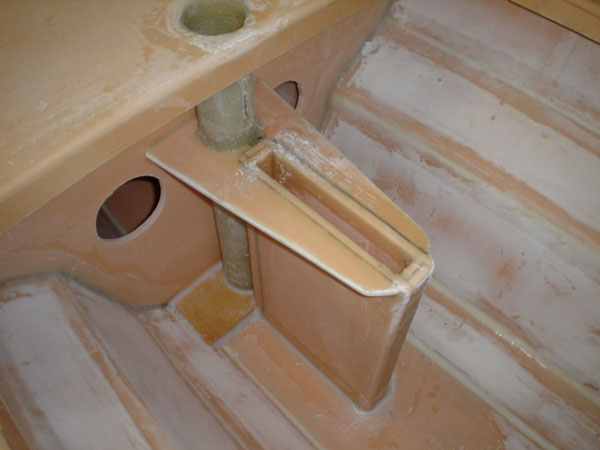
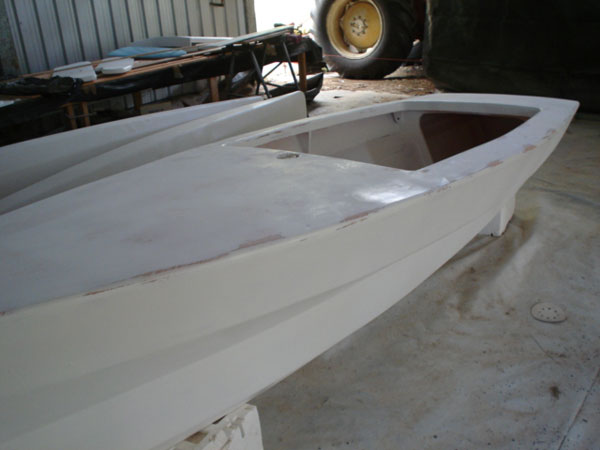
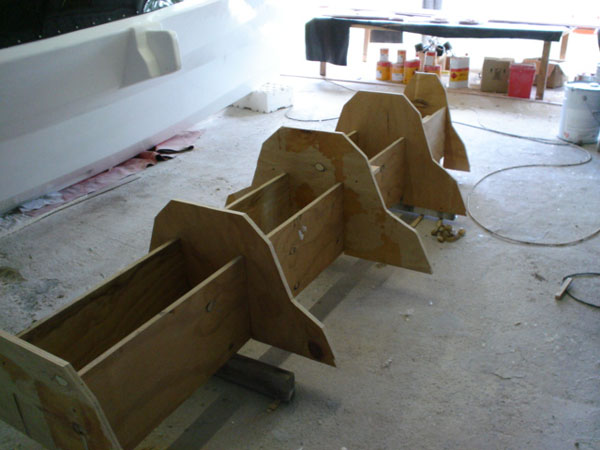
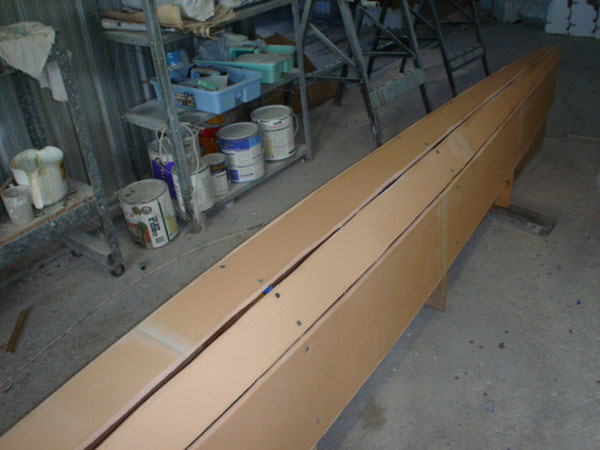
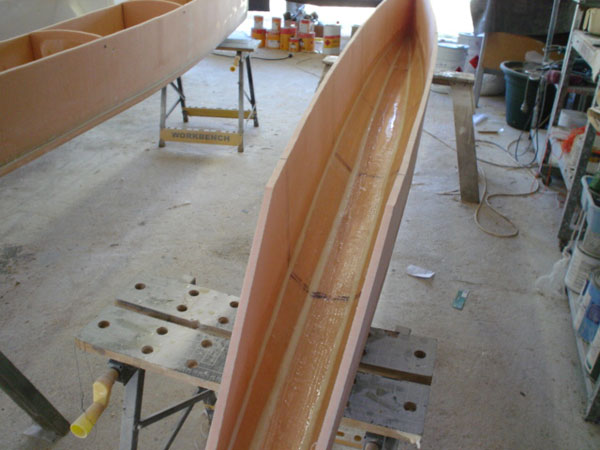
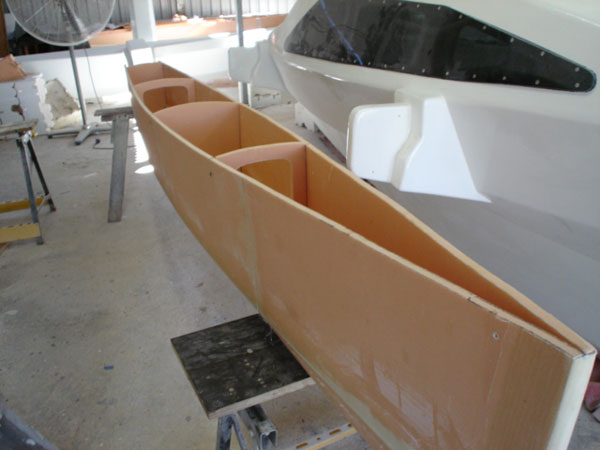
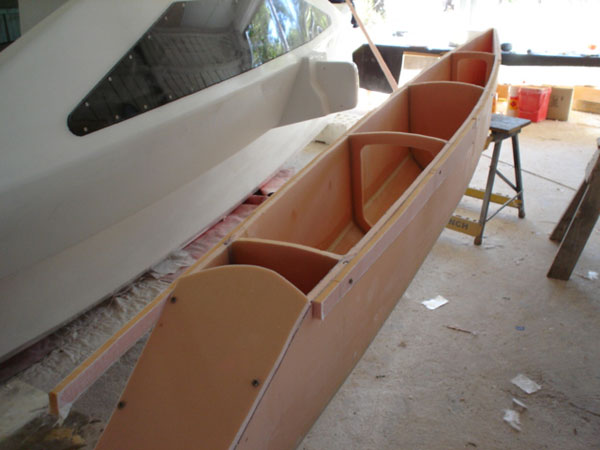
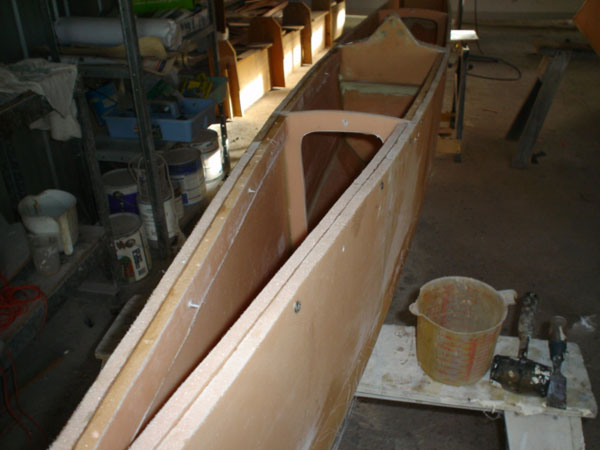
The deck is added. Plywood will bend in a fair curve but laminated foam is too stiff to bend. A solution is to score the laminated foam partly through, glue the deck down and add bog in the scores. Trim and sand the joints. Then the deck can be glassed over the edges.
